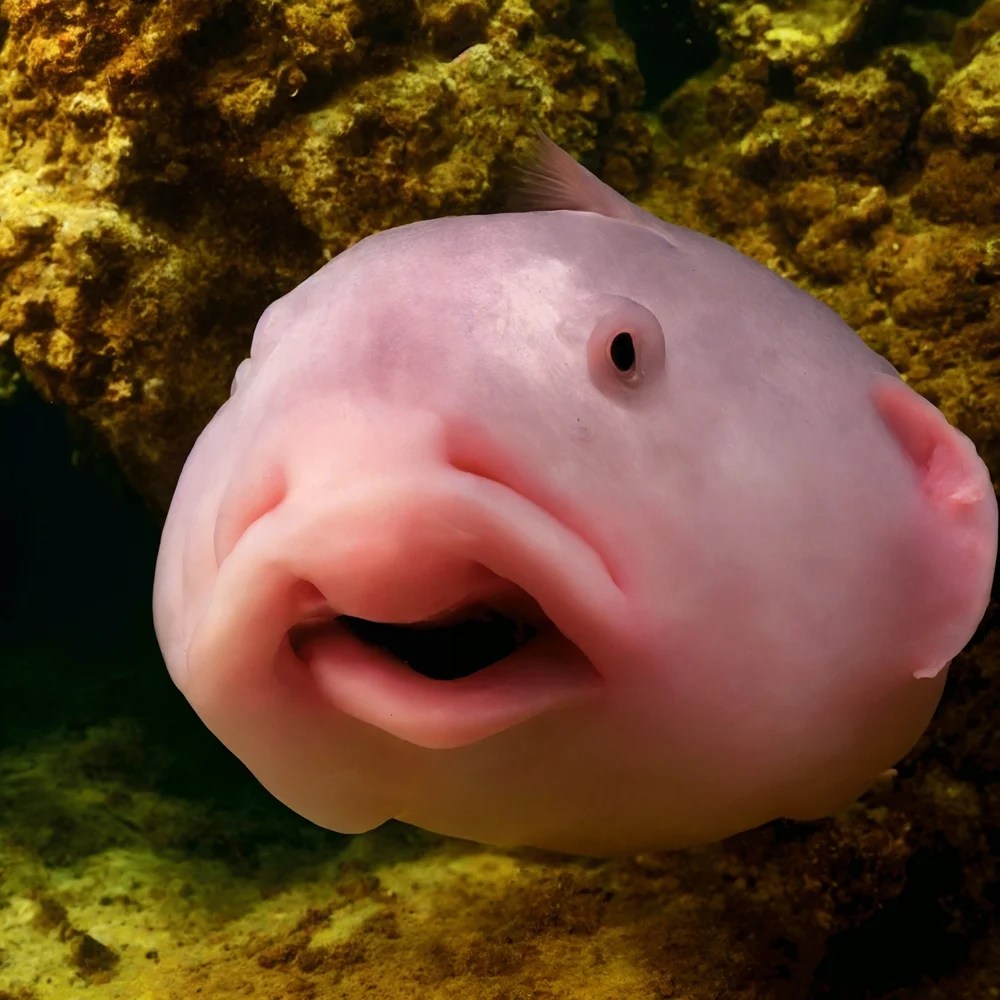The blobfish, an intriguing inhabitant of the deep sea, has captured the fascination of marine enthusiasts and casual observers alike. Found in the waters off the coasts of Australia and New Zealand, this gelatinous creature often evokes mixed reactions due to its unusual appearance. While it may not be the most aesthetically pleasing fish in the ocean, its unique adaptations and fascinating lifestyle make it a remarkable subject of study. As we dive deeper into the blobfish's watery world, we will uncover the secrets of its existence, its role in the ecosystem, and the challenges it faces in a rapidly changing environment.
The blobfish is known for its distinctive features, which help it thrive in the extreme conditions of the deep sea. With a body composed of a gelatinous substance that is less dense than water, the blobfish can effortlessly float in the depths without expending much energy. This adaptation is crucial for survival, as food sources are often scarce in the dark, cold waters that the blobfish calls home. Understanding how the blobfish interacts with its environment can provide valuable insights into the intricate web of life beneath the surface.
In this article, we will explore various aspects of the blobfish's life in water, from its feeding habits to its role in the marine ecosystem. We will also address common questions about this fascinating creature, offering a comprehensive overview that highlights its importance in the underwater world. Join us as we embark on a journey to uncover the truth behind the blobfish in water and the ecological significance of this unique marine inhabitant.
What Does a Blobfish Look Like in Water?
The blobfish's appearance is one of its most striking features, particularly when observed in its natural habitat. Unlike the vibrant colors and streamlined shapes of many marine species, the blobfish's body is soft and jelly-like, giving it a squishy appearance. This unique morphology serves a purpose: it allows the blobfish to maintain buoyancy in the deep sea. When the blobfish is brought to the surface, however, the changes in pressure can cause its body to distort, resulting in the grotesque visage often associated with this species.
How Does the Blobfish Adapt to Its Environment?
Blobfish have evolved several adaptations that enable them to survive in the challenging conditions of the deep ocean. Some key adaptations include:
- Gelatinous Body: The blobfish's body is primarily made up of a jelly-like substance, which is less dense than water. This allows it to float effortlessly at great depths.
- Low Energy Needs: Blobfish have a slow metabolism, requiring less energy to survive. They can consume food when it becomes available, often relying on small crustaceans and other marine organisms that drift by.
- Camouflage: The blobfish's pale coloration helps it blend into its surroundings, making it less visible to predators.
Where Do Blobfish Live in Water?
Blobfish inhabit the deep waters off the coasts of Australia and New Zealand, typically found at depths ranging from 600 to 1,200 meters (approximately 2,000 to 4,000 feet). These deep-sea environments are characterized by extreme pressure, low temperatures, and minimal light, creating a unique ecosystem that supports a variety of specialized marine life. The blobfish's ability to thrive in such conditions is a testament to its remarkable adaptations.
What Do Blobfish Eat in Water?
Blobfish are opportunistic feeders, primarily consuming small crustaceans, mollusks, and other organic matter that drifts past them in the water. Their feeding strategy often involves simply sitting still and waiting for food to come within reach. When a potential meal approaches, the blobfish uses its wide mouth to suck in prey, often swallowing it whole. This passive feeding method is well-suited for their low-energy lifestyle, allowing them to survive in the nutrient-scarce deep sea.
Why Are Blobfish Endangered in Water?
Despite their unique adaptations and fascinating lifestyles, blobfish face significant threats in their natural environment. Overfishing, deep-sea trawling, and habitat destruction are some of the key factors contributing to the decline in blobfish populations. As commercial fishing practices exploit deep-sea ecosystems, non-target species like the blobfish are often caught as bycatch, leading to increased mortality rates.
How Can We Protect Blobfish in Water?
Conservation efforts are essential to ensure the survival of blobfish and other deep-sea species. To protect these unique creatures, we can take several actions:
- Promote Sustainable Fishing Practices: Supporting sustainable fishing methods can help reduce bycatch and protect fragile marine ecosystems.
- Establish Marine Protected Areas: Designating specific regions as protected areas can safeguard the habitats of blobfish and other vulnerable species.
- Raise Awareness: Educating the public about the importance of blobfish and their role in the ecosystem can foster a greater appreciation for marine life and promote conservation efforts.
Conclusion: The Fascinating World of Blobfish in Water
The blobfish in water is a remarkable example of nature's creativity, showcasing the diverse adaptations that allow life to flourish in even the most extreme environments. While they may not be the most glamorous of creatures, their unique characteristics and ecological significance deserve recognition and protection. By understanding the challenges faced by blobfish and taking steps to conserve their habitats, we can help ensure that these peculiar inhabitants of the deep ocean continue to thrive for generations to come.
Dutch Bros Delivery: Your Favorite Drinks At Your Doorstep
Understanding The Ultrasound Tech Salary Landscape
Unlocking The Mysteries Of The Genie Guessing Game


